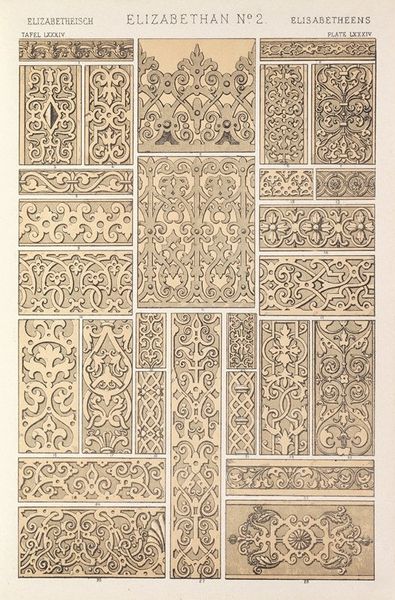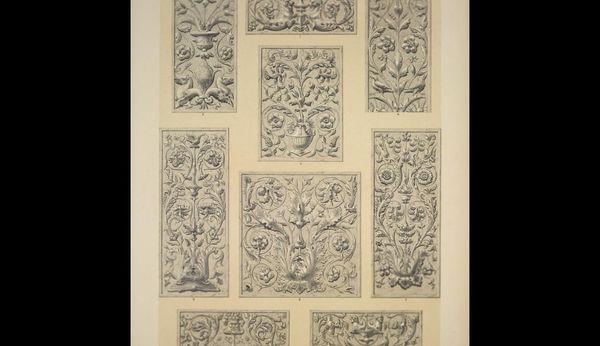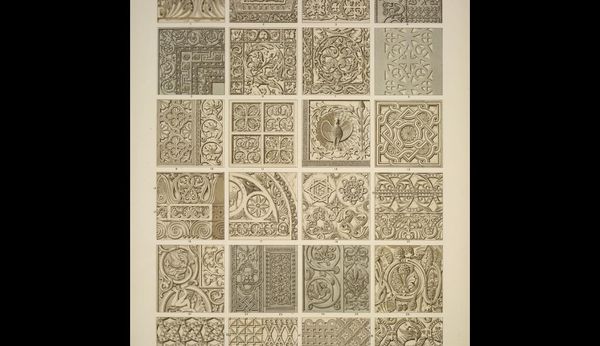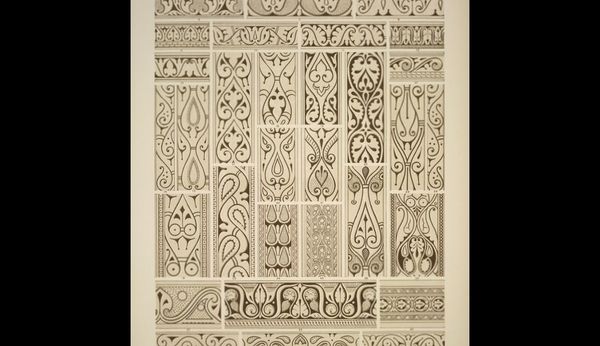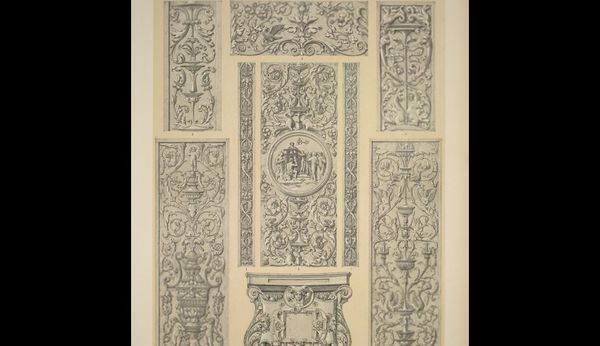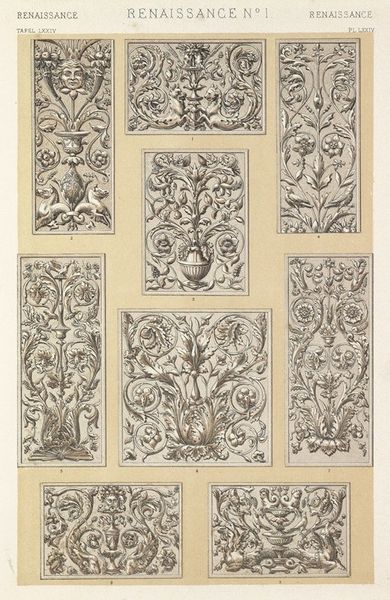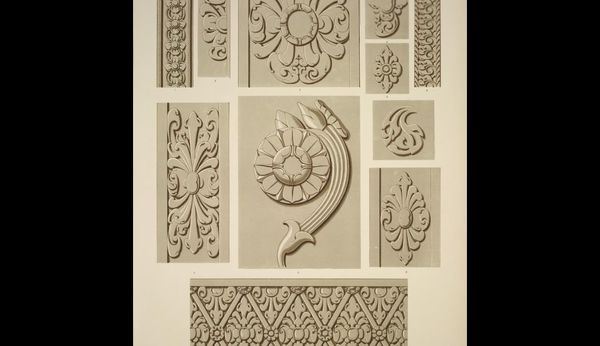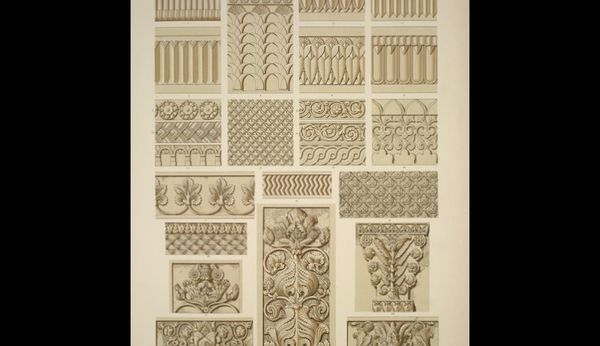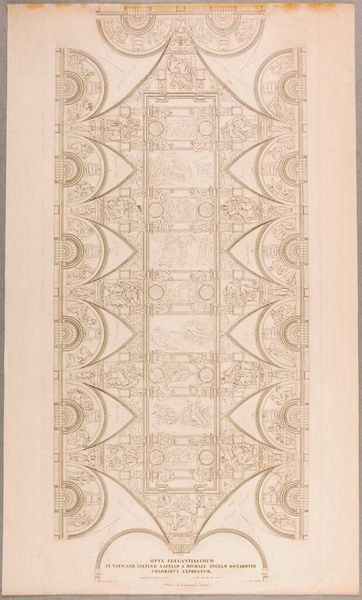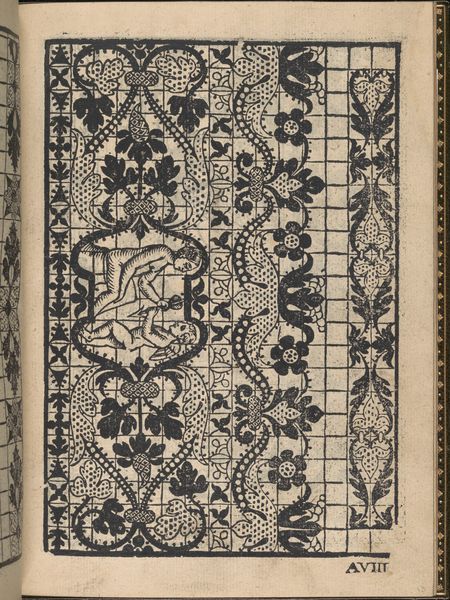
Renaissance Ornament no. 2. Renaissance ornaments in relief, from photographs taken from casts in the Crystal Palace, Sydenham
0:00
0:00
drawing, graphic-art, ornament, print, relief, textile
#
irregular pattern
#
drawing
#
graphic-art
#
natural stone pattern
#
ornament
# print
#
pattern
#
relief
#
textile
#
text
#
geometric pattern
#
11_renaissance
#
subtle pattern
#
repetitive shape and pattern
#
geometric
#
repetition of pattern
#
vertical pattern
#
intricate pattern
#
pattern repetition
#
decorative-art
#
layered pattern
Copyright: Public domain
Curator: This drawing, titled *Renaissance Ornament no. 2*, showcases Renaissance ornaments in relief. The images were derived from photographs of casts located in the Crystal Palace at Sydenham. What's your initial impression? Editor: It strikes me as quite formal, almost mathematical in its rigid structure, yet infused with organic elements. The composition invites contemplation of its rhythmic repetition. Curator: Rhythm is an insightful observation. Notice how Owen Jones meticulously captures the textures and varying depths of the original reliefs through linear precision. Semiotically, each element is highly representational: flora, fauna, classical motifs... they communicate symbolic meaning beyond their aesthetic function. Editor: True, but context is vital. Jones's endeavor was inextricably linked with the rise of industrial design and Victorian society's aspiration to elevate design standards by studying historical precedents. The Crystal Palace itself embodied this pursuit, aiming to educate the public by displaying casts and artifacts from across the world. Curator: Absolutely. His project signifies how artistic appreciation intersects with national and economic narratives. Beyond mere replication, he decodes the intrinsic formal qualities, offering insights into structure. Consider, the layering of patterns or contrasting symmetrical versus asymmetrical motifs. Editor: So, his art served didactic and ideological functions. How interesting. It reflects broader anxieties surrounding originality, authorship, and cultural ownership rampant throughout this historical moment. Curator: Precisely! The reproductive nature of this work challenges our conventional notion of authorship while enabling wider access to design inspiration across society. Editor: In essence, it serves not merely as ornamentation study but becomes commentary, reflecting institutional ambition during times marked by mass manufacturing growth. Curator: Very well said. It really leaves you contemplating both visual design and the politics embedded in representation. Editor: I leave here marveling at how this print offers layers, and a reflection on how artwork transcends history itself.
Comments
No comments
Be the first to comment and join the conversation on the ultimate creative platform.

